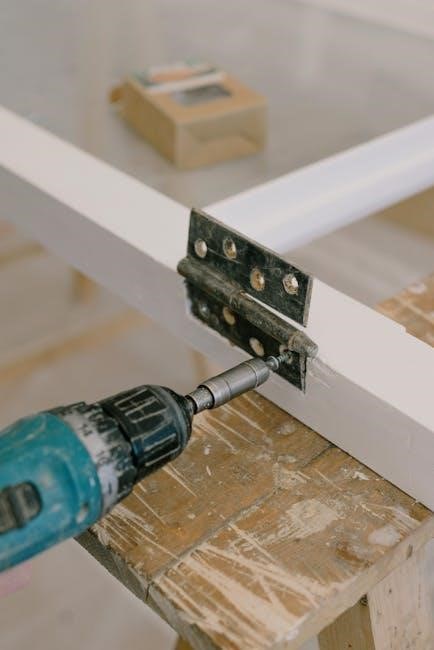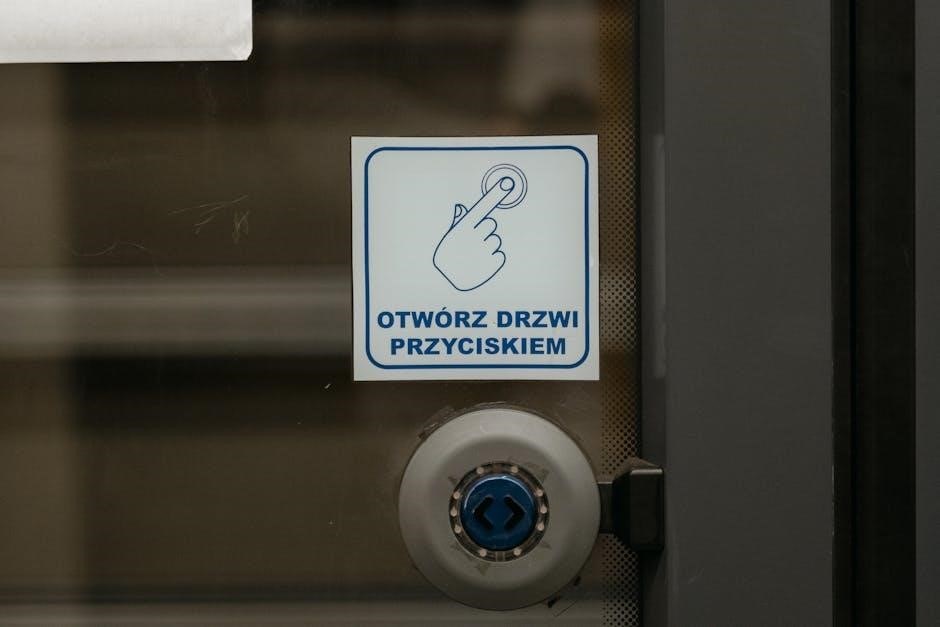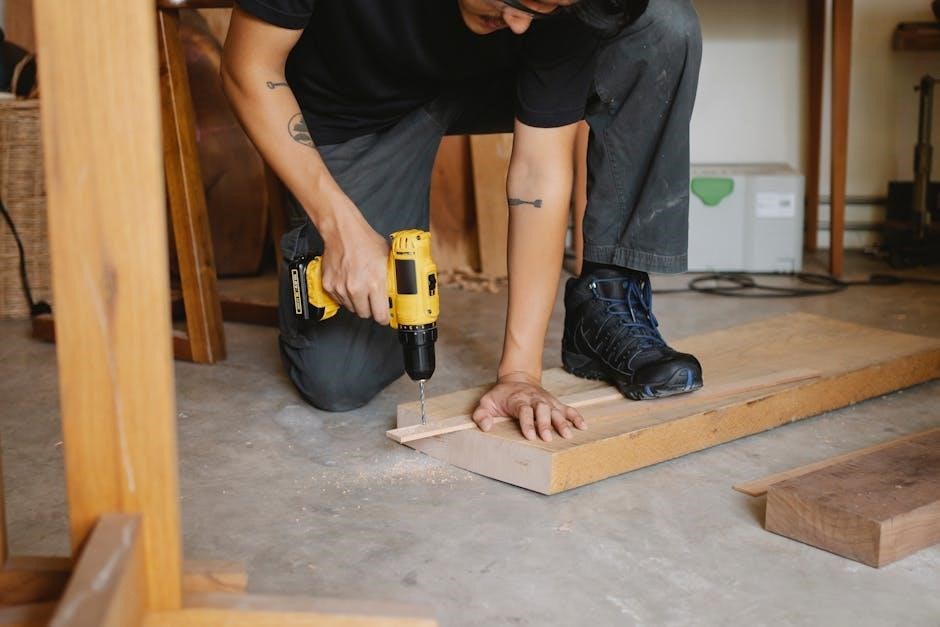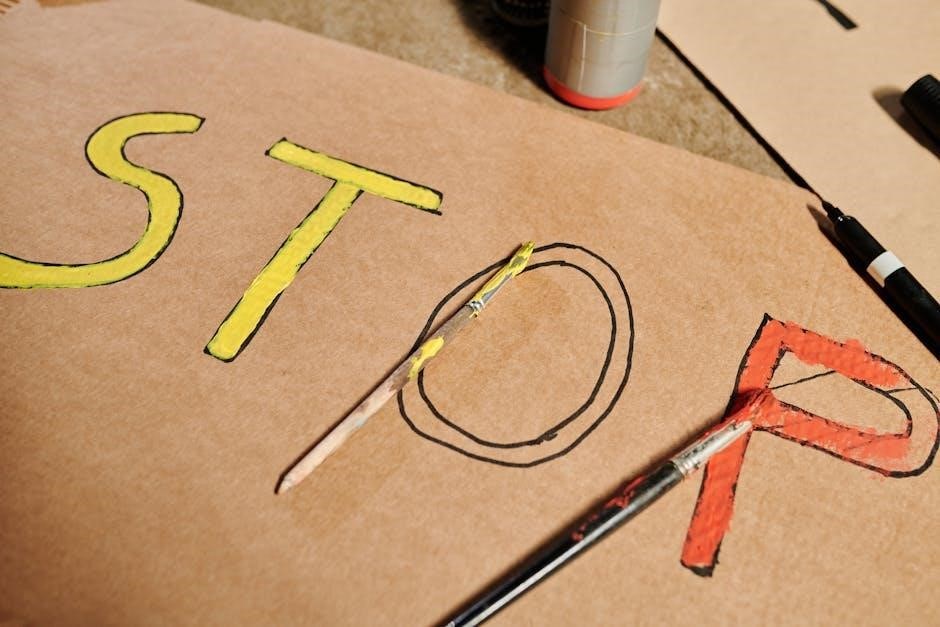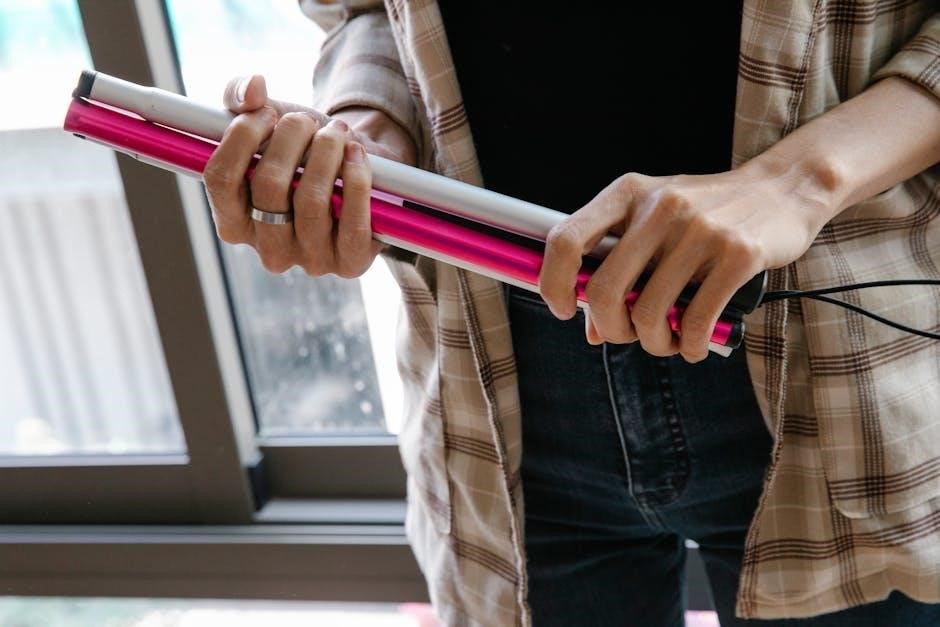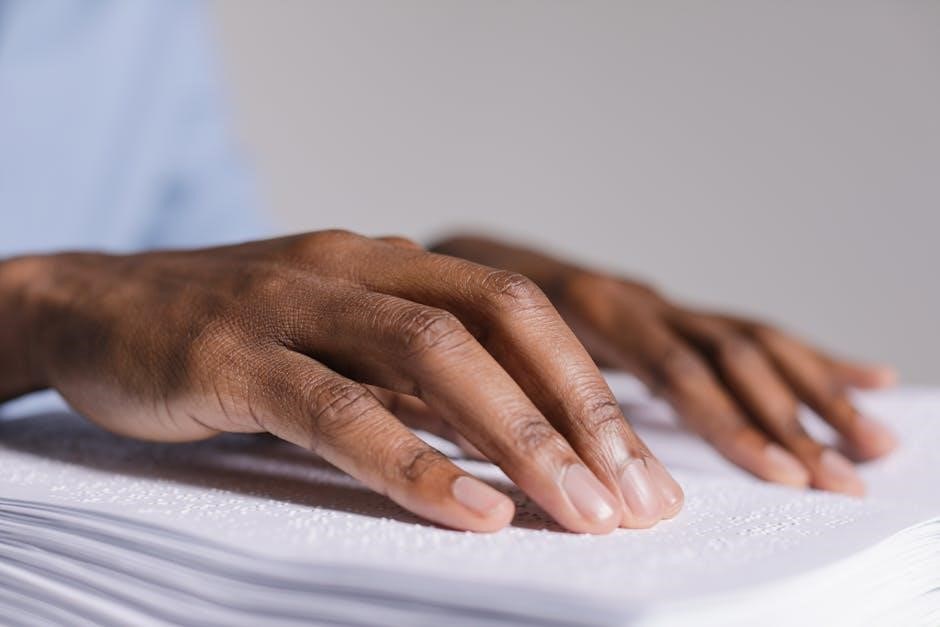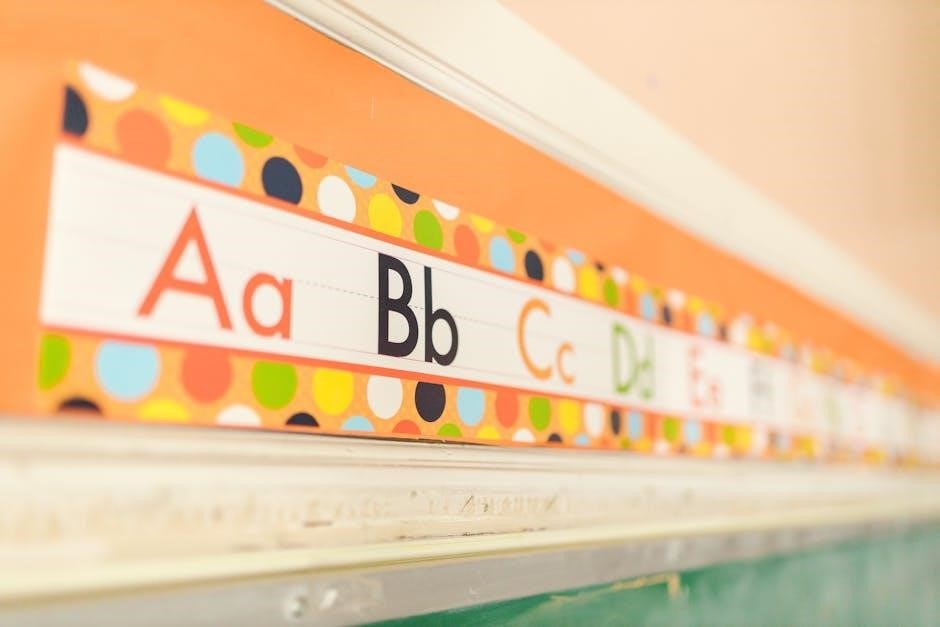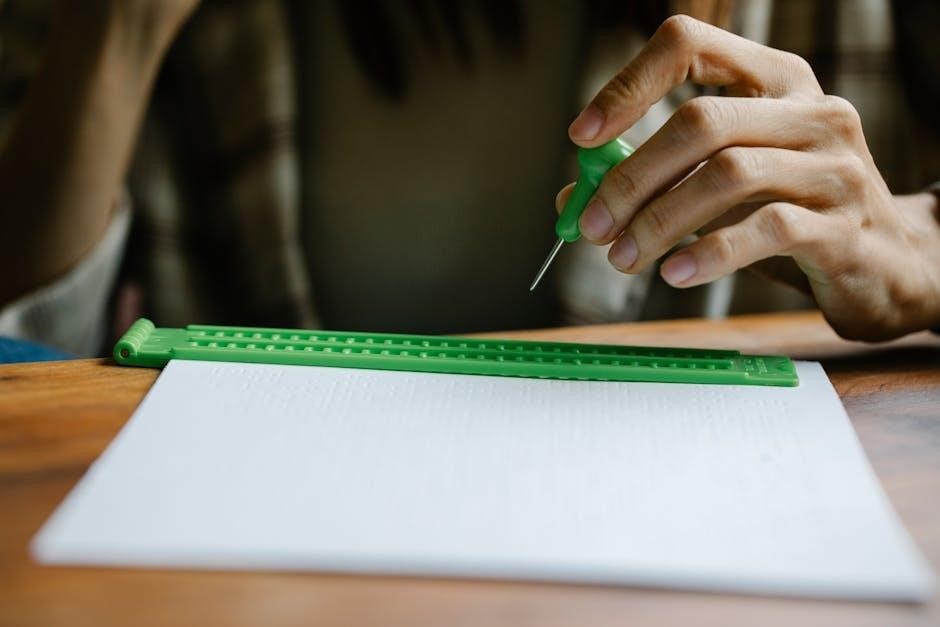Download PDF resources offering comprehensive practice problems on molarity calculations, including solutions and step-by-step explanations for various scenarios like dilution, solute mass, and concentration determination․

Molarity, a fundamental concept in chemistry, refers to the concentration of a solute in a solution, expressed as moles of solute per liter of solution․ Understanding molarity is crucial for chemists, as it enables precise calculations in laboratory settings, such as preparing solutions, analyzing concentrations, and conducting stoichiometric reactions․ In fields like pharmaceuticals, environmental science, and manufacturing, accurate molarity calculations are essential for safety, efficiency, and product quality․ This section introduces the basics of molarity, emphasizing its practical applications and the necessity of mastering it through practice problems․

Why Practice Molarity Problems?
Practicing molarity problems enhances problem-solving skills, improves understanding of concentration calculations, and prepares students for real-world laboratory applications in chemistry and related fields․
Understanding the Concept of Molarity
Molarity is a measure of solute concentration, defined as moles of solute per liter of solution․ It is calculated using the formula M = moles/volume (L)․ Accurate calculations require precise measurements of solute mass and solution volume․ Common problems involve determining solute mass needed for a specific molarity or finding the molarity of a solution given solute moles or mass․ Understanding molarity is crucial for laboratory work, allowing chemists to prepare solutions accurately and predict reaction outcomes․ Regular practice helps master these calculations and apply them to various scenarios, ensuring proficiency in handling chemical concentrations effectively․
Improving Problem-Solving Skills
Practicing molarity problems enhances analytical thinking and mathematical proficiency․ By solving diverse problems, students develop strategies to identify given data, choose appropriate formulas, and perform accurate calculations․ Regular practice builds confidence and reduces errors, fostering a deeper understanding of chemical concepts․ It also improves the ability to interpret results and troubleshoot common mistakes, such as unit conversion errors or miscalculations․ Consistent practice with varied problem types ensures readiness for complex scenarios, making problem-solving more efficient and systematic․ This skill is essential for success in chemistry and related fields, where precise calculations are critical for experiments and data analysis․

Common Types of Molarity Problems
Common problems include calculating molarity from moles and volume, determining solute mass needed, and analyzing concentration changes due to dilution or mixing solutions․
Calculating Molarity from Moles and Volume
Calculating molarity involves dividing the number of moles of solute by the volume of the solution in liters․ For example, if you have 0․50 moles of NaCl in 0․30 liters, the molarity is 1․7 M․ This method is fundamental for understanding concentration in solutions․ Always ensure the volume is converted to liters and moles are accurately calculated using molar mass․ Common errors include unit conversion mistakes and improper rounding of significant figures; Practice problems often provide moles and volume, requiring application of the formula M = moles/volume for accurate solutions․
Determining the Mass of Solute Needed
Determining the mass of solute needed involves reversing the molarity formula․ Given the desired molarity and volume, multiply by the molar mass to find grams․ For example, to prepare 200 mL of a 2․5 M K2CO3 solution, calculate moles needed (2․5 M * 0․2 L = 0․5 mol), then multiply by the molar mass (0․5 mol * 138․21 g/mol = 69․1 g)․ This ensures the correct amount of solute is used․ Practice problems often test this calculation, emphasizing accurate unit conversions and significant figures․ Common mistakes include forgetting to convert volume to liters or miscalculating moles․ Regular practice helps master this essential skill in solution preparation․
Concentration Changes Due to Dilution or Mixing
Concentration changes during dilution or mixing are crucial concepts․ Dilution involves adding solvent, reducing concentration․ For example, mixing 100 mL of 2․0 M NaOH with 300 mL of water results in 400 mL of 0․5 M NaOH․ Use the equation M1V1 = M2V2․ When mixing solutions, combine moles, then find new concentration․ Practice problems often involve calculating final concentrations after mixing or diluting․ Common errors include forgetting to convert volume units or mishandling significant figures․ Regular practice ensures mastery of these principles, essential for laboratory applications․ Understanding these concepts is vital for accurate solution preparation and analysis․

Step-by-Step Approach to Solving Molarity Problems
- Identify given information and unknowns․
- Choose the correct formula based on the problem type․
- Perform calculations carefully, ensuring unit consistency․
- Verify results with proper significant figures․
Identifying Given Information and Unknowns
Begin by carefully reading the problem to extract all provided data, such as moles, volume, molarity, and molar mass․ Determine what needs to be found, like molarity or grams of solute․ Highlight key values and units to avoid confusion․ Organize the information using a data table or list to clarify the knowns and unknowns․ This step ensures accuracy and prevents errors by keeping track of all necessary details․ For example, in a problem asking for grams of solute, note the molarity, volume, and molar mass as givens, with the mass as the unknown․ Clear identification sets the foundation for accurate calculations․
Choosing the Right Formula
Selecting the appropriate formula is crucial for solving molarity problems․ The most commonly used formulas include:
- Molarity (M) = moles of solute (n) / volume of solution (V) in liters․
- Moles (n) = mass (m) / molar mass (M)․
- Dilution formula: M1V1 = M2V2․
Match the formula to the given data and unknowns․ For example, use M = n/V when calculating molarity from moles and volume․ If converting mass to moles, use n = m/M․ For dilution problems, apply M1V1 = M2V2 to relate initial and final concentrations and volumes․ Ensure the formula aligns with the problem’s requirements to avoid errors․ Always double-check the units and ensure they are consistent with the formula’s requirements․ This step is foundational for accurate calculations and problem-solving․
Performing the Calculations
Accurate calculations are essential for solving molarity problems․ Start by identifying the given values and plugging them into the appropriate formula․ For example, to calculate molarity, use ( M = rac{n}{V} ), where ( n ) is moles of solute and ( V ) is volume in liters․ Ensure all units are consistent; convert grams to moles using molar mass (( n = rac{m}{M} )) and volumes from milliliters to liters․ Perform step-by-step arithmetic carefully, avoiding rounding errors․ For dilution problems, apply ( M_1V_1 = M_2V_2 ) to find unknown concentrations or volumes․ Always verify significant figures and unit consistency to ensure precise results․ Examples include calculating moles from mass or determining solution volume for a specific molarity․ Attention to detail is crucial for accurate outcomes․
Checking the Units and Significant Figures
Ensuring correct units and significant figures is critical in molarity calculations․ Always verify that volumes are converted from milliliters to liters and masses from grams to moles․ Significant figures must match the least precise measurement in the problem․ For instance, if a volume is given as 250 mL (three significant figures), the final molarity should also have three․ Pay attention to rounding rules to avoid overreporting precision․ Incorrect unit conversions, such as using milliliters instead of liters, can lead to errors․ Double-checking these details helps maintain accuracy and ensures reliable results in molarity problems․ Consistency in units and figures is essential for valid solutions․

Worked Examples of Molarity Problems
Explore detailed, solved examples of molarity calculations, including grams of solute needed, volume requirements, and concentration determinations, with step-by-step solutions and explanations for clarity and understanding․
Grams of Potassium Carbonate for a 2․5 M Solution
To determine the grams of potassium carbonate (K₂CO₃) needed for a 2․5 M solution, follow these steps:
Calculate moles of K₂CO₃: Molarity (M) = moles (n) / volume (L)․ Rearranging, n = M × L․ For 0․2 L (200 mL), n = 2․5 M × 0․2 L = 0․5 moles․
Convert moles to grams: Molar mass of K₂CO₃ = 138․21 g/mol․ Mass = moles × molar mass = 0․5 mol × 138․21 g/mol = 69․1 g․
This example illustrates how to calculate the mass of solute required for a specific molarity and volume, ensuring accurate preparation of solutions․
Key takeaway: Always use the molar mass and volume in liters for precise calculations․
Volume of Sodium Chloride Solution Needed
Determine the volume of a sodium chloride (NaCl) solution required to provide a specific amount of solute․ For instance, if you need 0․50 moles of NaCl in a 1․7 M solution, use the formula:
Molarity (M) = moles (n) / volume (V)
Rearrange to solve for volume: V = n / M․ Plugging in the values, V = 0․50 mol / 1․7 M ≈ 0․29 liters or 290 mL․ This calculation ensures the correct volume is prepared for the desired solute amount․
Key steps: Identify the given moles and molarity, then apply the formula to find the required volume accurately․
Molarity of an HCl Solution
Calculate the molarity of an HCl solution by determining the number of moles of HCl dissolved in a given volume of solution․ For example, if 5․5 g of HCl (molar mass 36․5 g/mol) is dissolved in 250 mL of water:
Step 1: Convert grams to moles: 5․5 g ÷ 36․5 g/mol ≈ 0․15 mol․
Step 2: Convert volume to liters: 250 mL = 0․25 L․
Step 3: Use the formula M = moles / volume: 0․15 mol ÷ 0․25 L = 0․60 M․
This step-by-step approach ensures accurate calculation of the solution’s molarity, essential for precise chemical experimentation and analysis․

Answers and Explanations
Find clear answers to molarity practice problems, including step-by-step explanations for calculating moles, volumes, and concentrations, ensuring accuracy and understanding of chemical solutions․
Answer Key for Practice Problems
The answer key provides detailed solutions to each problem, ensuring clarity and accuracy․ It includes molarity calculations, solute masses, and dilution problems․ Each solution is explained step-by-step, making it easy to understand the process․ Students can verify their answers and identify areas for improvement․ The key covers various scenarios, such as determining moles of solute, calculating solution volumes, and adjusting concentrations․ By reviewing the explanations, learners can master molarity concepts and enhance their problem-solving skills․ This resource is essential for chemistry students aiming to excel in solution chemistry․
Interpreting Results and Understanding Mistakes
Interpreting results helps students verify their solutions and identify errors․ Common mistakes include unit conversion issues and formula misapplication․ By analyzing errors, learners can refine their approach and improve accuracy․ Understanding mistakes enables better grasp of molarity principles․ Reviewing problem-solving steps ensures conceptual clarity and reduces future errors․ This process fosters confidence and skill development in chemistry problem-solving․

Common Errors and How to Avoid Them
Common errors in molarity problems often stem from incorrect unit conversions or formula application․ For instance, miscalculating moles from grams or misusing volume units can lead to wrong answers․ To avoid these, double-check conversions and ensure formula components align with given data․ Pay attention to significant figures to maintain precision․ Regular practice and reviewing problem-solving steps help minimize mistakes․ Understanding these pitfalls enhances problem-solving skills and accuracy in molarity calculations․ By addressing errors systematically, students can improve their grasp of chemical concentration principles effectively․

Mastering molarity through practice problems is essential for understanding chemical solutions․ Regular practice and reviewing solutions enhance problem-solving skills and conceptual clarity․ Keep practicing to excel!
Importance of Regular Practice
Regular practice with molarity problems is crucial for building a strong foundation in chemistry․ It enhances problem-solving skills, improves understanding of concepts, and boosts confidence․ Consistent practice helps in identifying common errors and mastering calculations․ By solving various types of problems, students develop a systematic approach to tackling complex scenarios․ Regular practice also reinforces the application of formulas and theories, making it easier to grasp advanced topics․ Dedicate time daily to solve problems, review solutions, and analyze mistakes to achieve proficiency in molarity calculations․ This discipline ensures long-term retention and excellence in chemical problem-solving․

Additional Resources
Access online PDFs, textbooks, and educational websites for supplementary molarity practice problems with detailed answers and explanations to enhance learning and problem-solving skills․
Where to Find Molarity Practice Problems PDF
Find molarity practice problems with answers PDF on educational websites, online repositories, and chemistry textbooks․ Websites like Google Classroom, GitHub, and educational forums often host free resources․ Search for “molarity practice problems with answers PDF” to access downloadable materials․ Many universities and professors share PDFs containing problems and solutions for students․ Additionally, online platforms like Khan Academy and Coursera offer supplementary materials․ Ensure the sources are credible and the content aligns with your study needs․ These resources provide hands-on practice, enhancing understanding and problem-solving skills in molarity calculations․

